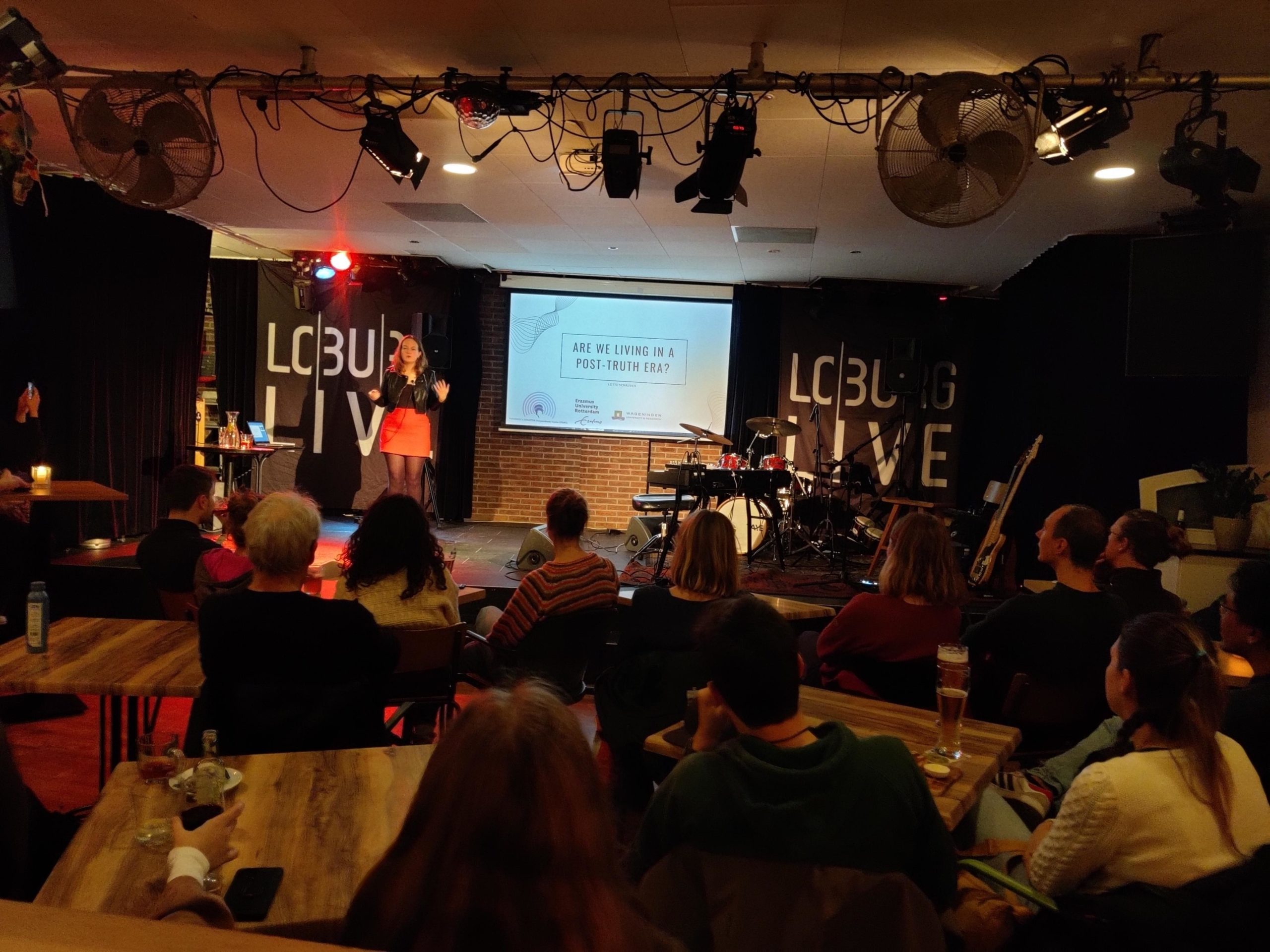Researchers Lotte Schrijver (WUR) and Rens Tacoma (Leiden), both experts in fake news, were guests at the Science Café in Loburg. ‘Even those with an academic background must be wary.’
Some thirty members of the audience listened to Schrijver and Tacoma’s presentations. PhD candidate Schrijver is researching the dissemination of fake news during the covid pandemic, and Tacoma was awarded an NWO (Dutch Research Council) grant to study fake news in Roman times.
A summary of the evening in five bullet points:
1. Not all that is false is fake news
Not everything that is not true on the internet can be qualified as fake news. Fake news is made with the express intention of appearing true in order to convince a reader of these falsehoods, says Schrijver. Determining whether falsehoods on the internet are indeed purposely fabricated is no easy task. That makes it difficult to address this issue in a manner that does not infringe upon freedom of speech.
2. No need to panic
The topic of fake news seems to be on everyone’s mind. Still, the concerns are partially unjustified, says Schrijver. Data does not substantiate the idea that there is a lot of fake news going around. Moreover, fake news, and thus its impact, appears to have a limited reach. Placing added focus on the issue may even do more harm than good.
3. You are not immune
Misinformation can affect anyone. Even with an academic background, wariness is needed. Those with a high level of education are notoriously sensitive to motivated reasoning, in which information is filtered to confirm the existing bias. Furthermore, science can be abused. In a society that values science, some fake news messages abuse science to support their claims.
4. Investigating misinformation requires creativity
It is difficult to determine what messages internet users see since social media businesses prefer to keep such information to themselves, and the number of messages is huge. Schrijver trains a machine learning model to recognise old tweets with misinformation about covid for the purpose of her doctoral research. Still, considerable human effort is needed. A team of four people assessed four thousand tweets to determine whether they were true or false.
5. Fake news is not new
Tacoma explained how falsehoods were used for political gain in Roman times. Sometimes, our present is called the post-truth era. We may live in a time of falsehood; we have been doing so for over two thousand years. Comforting, according to Tacoma, because something we have been facing for so long must be manageable.
Text and photo: Femke van den Dries

 Photo Resource.
Photo Resource.